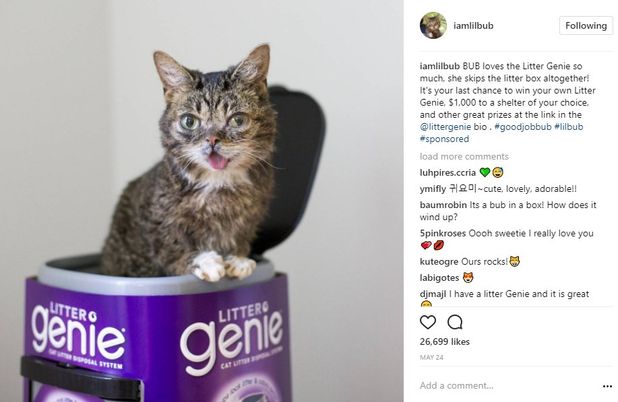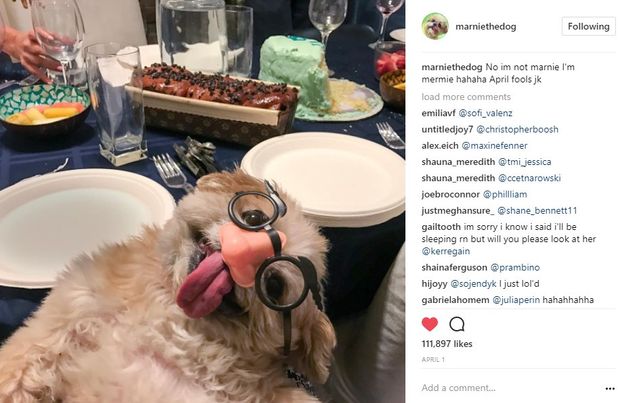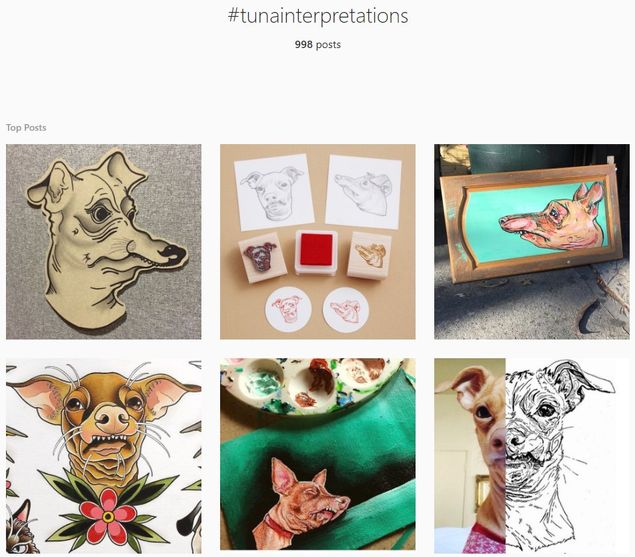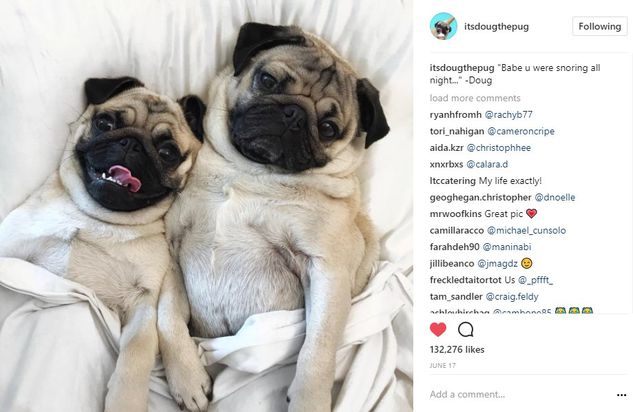Cele-purr-ties of Instagram: 3 Digital Marketing Lessons You Can Learn From Celebrity Pets
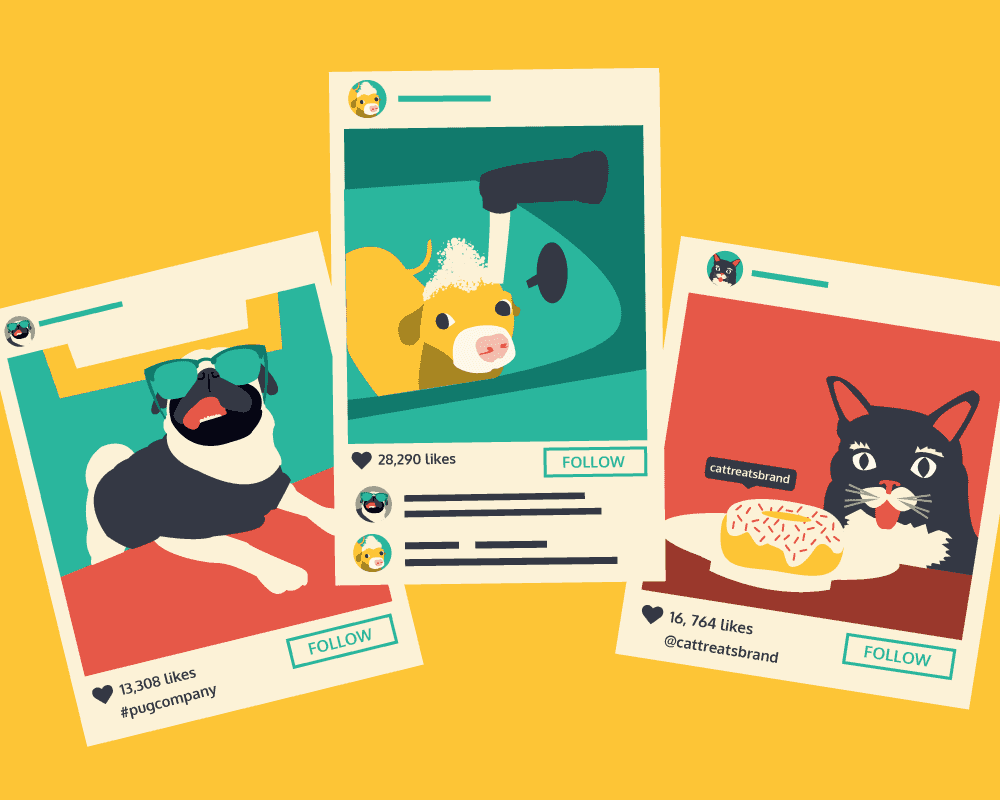
Tuna, Lil Bub, Doug the Pug, Marnie, and the well-known Grumpy Cat. You know them, you love them, and so do millions of others. They all have their own books, toys, and a combined 10.6 million followers. These pets all have something in common, and it’s not just that they’re cute. It all comes down to this one, very important factor – good digital marketing. In fact, we could all learn a thing or two from our favorite Instagram furballs.
1) Brand associations
Take Courtney Dasher, the owner of Tuna (if you think you don’t know Tuna, you’re wrong – you’ve definitely seen a meme of him), commonly known by his Instagram handle @tunameltsmyheart. Dasher recalls a successful CEO once telling her, “Without knowing it, you’ve started a start-up company quicker than most, because you have a real understanding of what your brand is.”
Throughout the past five years of fame, Dasher has kept Tuna’s brand as authentic as possible. She’s turned down major money when she doesn’t think that the offer is a good fit for Tuna or the brand. What the Tuna brand does include is raising awareness and finances in support of animal rescue shelters since Tuna himself is a rescue pet.
Other Instagram pets find themselves in the same boat – a position of power, where they can do good, such as Lil Bub, an adorable, disabled cat owned by Mike Bridavsky. In 2014 Bridavsky created Lil Bub’s Big Fund, which works with the ASPCA and is the first national fund for special needs pets in America. So far, they’ve raised nearly $200,000.
“Because so many people care about Bub, it’s really easy for me to attach a positive message—and people will listen,” said Bridavsky. Bridavsky stays honest with Bub’s followers by not promoting brands he doesn’t use. However, he will for brands he does, and it’s estimated that this pint-sized cat makes around $7,000 for just one sponsored post.
Similar to Tuna and Lil Bub, companies also need to pay special attention to their own associations. Both pet owners each endorse companies or brands that they actually use and causes that they believe in. What you stand for and what (or who) you represent will speak volumes. While these pets associate themselves with other brands, even associations with certain ideas can and will impact your business. By being selective with your brand associations, you give even more value to the associations you do choose to make.
As mentioned, Dasher won’t accept just any kind of partnership on Tuna’s behalf; they have to be the right kind of fit for both Tuna and the Tuna brand. In the past, she has promoted pet-friendly hotels that they’ve stayed at as well as the monthly dog product delivery service, BarkBox, which Dasher and Tuna themselves subscribed to.
This kind of truthful promotion means that their fans trust them and what they say in relation not only to themselves but to the products and services they use. That trust is valuable not only to the Tuna brand but to those who they choose to align themselves with; it’s part of what makes the partnership so attractive.
If people expect the shaggy socialites they follow online to be honest with them, you’d better believe they expect the same from the companies who want their business. Associate your business carefully and truthfully and you’ll be rewarded for it.
2) Engagement
Consider Marnie, a loveable senior dog with a tilted head and lolling tongue. Marnie’s owner Shirley Braha credits the success of Marnie and her Instagram account to listening to Marnie’s audience. By paying attention to what people liked, Braha was able to tailor her content accordingly. Turns out, fans loved purposefully misspelled words recounting simple observations and silly jokes. And it works very well for Marnie.
Tuna also interacts with fans. Dasher often hosts meet and greets at pet stores and has attracted large crowds during their book tours. Dasher will also repost her favorite artistic renditions of Tuna by fans on what she calls #TunaInterpretations for #TunaArtTuesdays. These have included paintings, stamps, sculptures, pumpkin carvings, and even tattoos, all replicating Tuna’s signature look. These weekly posts encourage a sense of community and inclusion in Tuna’s world.
Brands that engage with their customers are rewarded for their efforts. There are tons of examples of this, such as Wendy’s tongue-in-cheek tweets that have delighted the Twitter-verse. People notice when brands interact with their customers (and they especially notice when engagement is done unsuccessfully so watch yourself!).
3) Personalization
Each of these pets has a distinctive personality and style to their posts. Doug the Pug represents humanity’s innermost thoughts. His posts cover a range of content, from meetings with celebrities to hilariously edited videos to just plain relatable complaints. Doug is more than someone’s pet dog, he’s a celebrity and a brand, with a clear voice that fans have come to expect. It was this unique voice that contributed to his success.
No one wants to feel like they’re dealing with a cold corporation. The humanization of any brand can be the key to its success. And this can be done in a number of ways, from social media to work environment. And don’t think that this means sacrificing your professionalism.
Brands that can find a way to make themselves stand out tend to be successful. Take insurance companies Geico and Allstate – while insurance might sound, well, boring, these companies have incorporated fun into their brands (I can’t believe I used the words ‘insurance’ and ‘fun’ in the same sentence).
Fun in this instance comes in the form of a subtly sassy gecko with a Cockney British accent and Mayhem, who has been characterized as everything from a deer in the headlights to a portable grill, wreaking havoc and hilarity in his path. These companies used this spokesman and spokes-gecko to bring personality to a usually dreaded topic.
Another example, closer to home, and far more achievable for smaller agencies, is Perfect Search Media itself. Little things like our pictures (which turn into too cute baby pictures when you hover over them) under the team page give us a touch of fun and show our clients who they’re working with. You can get the job done and have a good time doing it, something that both customers and the people they’re working with (AKA, you) want.
—
Associate your brand carefully and truthfully, engage with your customers, and personalize your company. If you’re a new company, I hope these tips help you on your way. If you’re an old company, this can still be of use – I’ve heard that you can teach an old dog new tricks.


